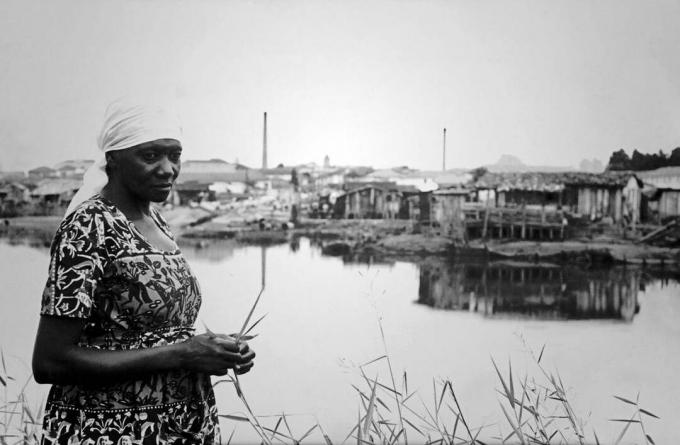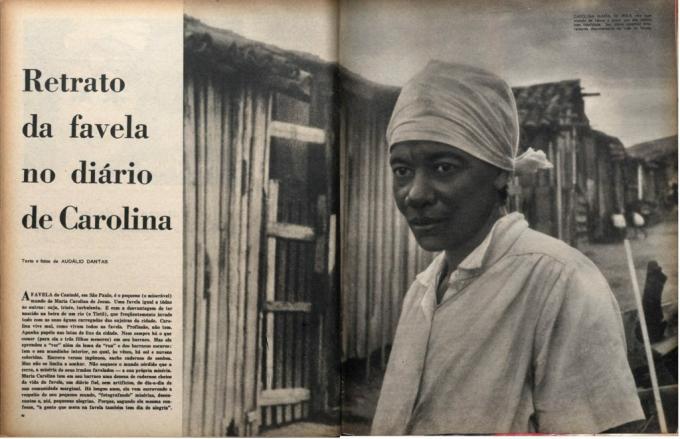Caroline Mary of Jesus was one of the first black female writers from Brazil, in addition to being considered one of the great names of national literature.
In her works, the poet narrates everyday life. In summary, they are stories of struggle, overcoming and suffering of black women living in the community (favela) in the 20th century.
see more
Discover the biography of Magda Soares and her main works
Who was Emmi Pikler? Discover its history and methodology
In addition to being an instrument for denouncing social ills, its thousands of handwritten pages (novels, poems, Tales, chronicles, plays, songs) collide with the rules of literary tradition and the standard norm of the language.
This is because the author has been published in more than 40 countries and translated to several languages.
Carolina Maria de Jesus was born in Sacramento, Minas Gerais, on March 14, 1914.
Daughter of an illiterate washerwoman and granddaughter of slaves, the girl was raised along with seven siblings by a very humble family.
To study, she received help from one of her mother's clients – Maria Leite Monteiro de Barros. At the age of seven, she started attending Allan Kardec College, the first Spiritist school in Brazil, where she studied for two years.
However, even though she attended school for a short time, since she was a child she showed a taste for reading and curiosity for the world.
Soon after, in 1924, in search of better opportunities, her family moved to Lageado, going to work as farmers on a farm.
However, in 1927, they returned to Sacramento.
In the 1930s, the family is once again moving, now to Franca (SP). In the city, Carolina works as a farmer and maid.
At the age of 23, her mother passes away and Carolina goes on to the capital, in search of a better life. In São Paulo, she is hired as a cleaner at Santa Casa de Franca, and then as a maid.
In 1948, unemployed and pregnant, she moved to community (favela) of Canindé.
It was there where she had and raised her three children (João José de Jesus, José Carlos de Jesus and Vera Eunice de Jesus Lima), all from different relationships.

Carolina worked at night as a paper picker, but during the day she wrote and read the magazines she found on the street.
With the dream of becoming a writer, in 1941 she was the editor of the newspaper Morning Sheet with a poem written in honor of Getulio Vargas. Soon after that, her text and photo were published in the newspaper.
Persistent, she continued sending her poems to the editorial office, receiving the nickname “the black poetess“.
In 1958, the newspaper Leaf of the Night sends the reporter Audálio Dantas to write a report on the favela of Canindé.
On the occasion, Carolina Maria de Jesus had her house visited. She presents him with her diary, which surprises the reporter with the story.
In the same year, Audálio published excerpts from Carolina's text, resulting in numerous accolades.

A year later, the magazine The Cruise also publishes some excerpts from the diary.
And in 1960, Carolina's first book was officially released, Eviction Room: Diary of a favela, edited by Audálio Dantas.
As a result of her success, the writer managed to buy a house in Alto de Santana and leave the favela.
In addition to financial success, she achieved recognition, being honored by the Paulista Academy of Letters and the Academy of Letters of the Faculty of Law of São Paulo.
Also, in 1961, she went to Argentina receive the title of “Orden Caballero Del Tornillo”.
However, her peak did not last long and she soon returned to the condition of a paper picker.
Almost in the 1970s, in 1969, she moved with her children to a farm in Parelheiros. During the period, it was practically abandoned by the publishing market.
On February 13, 1977, in the state of São Paulo, Carolina Maria de Jesus died of respiratory failure at the age of 62 (almost 63).
Formerly what oppressed man was the word Calvary; Today is salary.
I pick up paper, but I don't like it. So I think: pretend I'm dreaming.
There are people who, on Saturdays, go dancing. I do not dance. I think it's silly to keep running here, there. I already drive so much to get money to eat.
Hunger dizziness is worse than alcohol dizziness. The dizziness of alcohol impels us to sing. But that of hunger makes us tremble. I realized that it's horrible to have only air in your stomach.
Rich children play in the gardens with their favorite toys. And poor children accompany their mothers to beg in the streets. What tragic inequalities and what a joke of fate.
The greatest spectacle of the poor today is eating.
Democracy is losing its supporters. In our country, everything is weakening. Money is weak. Democracy is weak and politicians are very weak. And everything that is weak dies one day.
I classify São Paulo like this: The Palace is the visiting room. The City Hall is the dining room and the city is the garden. And the favela is the backyard where they throw the garbage.
Life is like a book. Only after having read it do we know what it contains. And we, when we are at the end of life, are the ones who know how our life went. Mine, so far, has been black. Black is my skin. Black is where I live.
(Eviction room)
Don't say I was junk,
I lived on the edge of life.
Say I was looking for work,
but I was always passed over.
Tell the Brazilian people
that my dream was to be a writer,
but i had no money
to pay a publisher.(Eviction room)
Many fled when they saw me
Thinking I didn't notice
Others asked to read
The verses I wroteIt was paper I picked up
To pay for my living
And in the trash I found books to read
How many things I wanted to do
I was blinded by prejudice
If I extinguish, I want to be reborn
In a country where black predominatesGoodbye! Goodbye, I'm going to die!
And I leave these verses to my country
If we have the right to be reborn
I want a place where black people are happy.(Personal anthology)
The children of the favela. Magazine of the Magisterium. Sao Paulo, no. 24:8, p. 18-19, Dec. 1960.
Where are you happiness? In: Journal Movement, 21 Feb. 1977. (Tale).
Travel diary: Argentina, Uruguay, Chile. Appendix to JESUS, Carolina Maria de. house of tiles. Buenos Aires: Editorial Abraxas, 1963, p. 128-191.
My life. In: MEIHY, José Carlos S. B; LEVINE, Robert M. black cinderella: the saga of Carolina Maria de Jesus. Rio de Janeiro: UFRJ, 1994, p. 172-189.
The African Socrates. In: MEIHY, José Carlos S. B; LEVINE, Robert M. black cinderella: the saga of Carolina Maria de Jesus. Rio de Janeiro: UFRJ, 1994, p.190-196.

Launched in 1960, Eviction room: Diary of a slum dweller is the first book by Carolina Maria de Jesus.
The narrative is about her life in the community (favela) and how she and her children survived hunger.
To this day, the account is consistent with the conditions of many other women and children in Brazilian communities.
The work turned bestseller with its sales record: 30,000 copies in the first edition, and 100,000 in the second and third editions.
Furthermore, eviction room has been translated into 13 languages and distributed in over 40 countries.
These numbers represent the public's interest in the allegation's narrative, which was on the rise in the 1950s and 1960s.

On the day she would have turned 105, March 14, 2019, writer Carolina Maria de Jesus was honored by Google.
Throughout the day, the company's logo was personalized by an illustration that depicts it, a Doodle. In addition to its image, Doodle had a community and a book, living up to its history.
Perhaps you might be interested in: